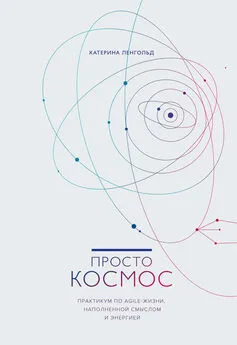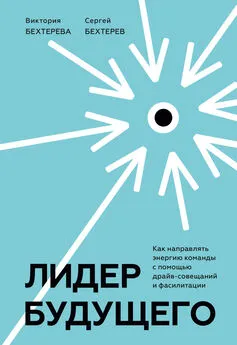Мелина Кости - Вдохновляющий лидер [Команда. Смыслы. Энергия] [litres]
- Название:Вдохновляющий лидер [Команда. Смыслы. Энергия] [litres]
- Автор:
- Жанр:
- Издательство:Литагент МИФ без БК
- Год:2018
- Город:Москва
- ISBN:978-5-00117-165-2
- Рейтинг:
- Избранное:Добавить в избранное
-
Отзывы:
-
Ваша оценка:
Мелина Кости - Вдохновляющий лидер [Команда. Смыслы. Энергия] [litres] краткое содержание
На русском языке публикуется впервые.
Вдохновляющий лидер [Команда. Смыслы. Энергия] [litres] - читать онлайн бесплатно полную версию (весь текст целиком)
Интервал:
Закладка:
143
Spira, Jonathan B. (2011). Overload! How Too Much Information is Hazardous to Your Organization. Hoboken, NJ: John Wiley & Sons.
144
Dux, Paul, Ivanoff, J., Asplund, Christopher L., Marois, René (2006). ‘Isolation of a central bottleneck of information processing with time-resolved fMRI’. Neuron, 52(6), 1109–1120.
145
Iqbal, Shamsi T., Horvitz, Eric (2007). ‘Disruption and recovery of computing tasks: Field study, analysis, and directions’. Paper presented at the Proceedings of the SIGCHI Conference on Human Factors in Computing Systems, San Jose, California, 28 April to 3 May, pp. 677–686.
146
Adkins, Amy (2015). ‘Only 35 per cent of US managers are engaged in their jobs’. Gallup, 2 April. [Online] Доступно на: http://www.gallup.com/businessjournal/182228/managers-engaged-jobs.aspx.
147
Caruso, David, Salovey, Peter (2004). The Emotionally Intelligent Manager: How to Develop and Use the Four Key Emotional Skills of Leadership. San Francisco: Jossey-Bass.
148
Russell, James A., Weiss, Anna, Mendelsohn, Gerald A. (1989). ‘Affect grid: A single-item scale of pleasure and arousal’. Journal of Personality and Social Psychology, 57(3), 493–502.
149
Witters, Dan, Agrawal, Sangeeta (2014). ‘What your wellness programs are missing’. Gallup, 7 July. [Online] Доступно на: http://www.gallup.com/businessjournal/172106/workplace-wellness-programs-missing.aspx.
150
Wallman, James (2015). Stuffocation: Living More With Less. Second edition. London: Penguin.
151
McMains, Stephanie; Kastner, Sabine (2011). ‘Interactions of top-down and bottom-up mechanisms in human visual cortex’. The Journal of Neuroscience, 31(2), 587–597. [Online] Доступно на: http://www.jneurosci.org/content/31/2/587.long.
152
The Energy Project and Harvard Business Review (2014). ’The human era @ work: Findings from The energy Project and Harvard Business Review’. White paper.
153
Loehr, Jim, Schwartz, Tony (2003). The Power of Full Engagement: Managing Energy, Not Time, Is the Key to High Performance and Personal Renewal. New York: Simon & Schuster.
154
Hollingshead, Todd (2012). ’Poor employee health means slacking on the job, business losses’. BYU News, 19 August. [Online] Доступно на: https://news.byu.edu/news/poor-employee-health-means-slacking-job-business-losses.
155
Гликемический индекс (англ. glycemic (glycaemic) index) – показатель влияния продуктов питания после их употребления на уровень глюкозы в крови (далее – уровень сахара в крови).
156
Friedman, Ron (2014). ’What you eat affects your productivity’. Harvard Business Review, 17 October. [Online] Доступно на: https://hbr.org/2014/10/what-you-eat-affects-your-productivity.
157
Coulson, Jo C., McKenna, Jim, Field, Matthew (2008). ’Exercising at work and self-reported work performance’. International Journal of Workplace Health Management, 1 (3), 176–197.
158
The Energy Project and Harvard Business Review (2014). ’The human era @ work: Findings from The Energy Project and Harvard Business Review’. White paper.
159
Hafner, Marco, Van Stolk, Christian, Saunders, Catherine, Krapels, Joachim, Baruch, Ben (2015). ’Health, wellbeing and productivity in the workplace’.Rand Europe. [Online] Доступно на: https://www.rand.org/.
160
Mind Gym (2005). The Mind Gym: Wake Your Mind Up. London: Sphere.
161
Bell, Poorna (2013). ’The official amount of free time you need to be happy’. The Huffington Post, 7 June. [Online] Доступно на: http://www.huffingtonpost.co.uk/2013/06/07/seven-hours-work-life-balance_n_3401624.html.
162
Адаптировано из главы ‘Peace of mind’ из: Owen, Jo (2012). How to Manage: The Art of Making Things Happen. Third edition. Harlow: Pearson.
163
Miller, Liz (2009). Mood Mapping: Plot Your Way to Emotional Health and Happiness. London: Pan Macmillan.
164
Magistretti, Pierre J., Pellerin, Luc, Martin, Jean-Luc (1995). ’Brain energy metabolism: an integrated cellular perspective’. In: Floyd E. Bloom, David J. Kupfer (eds). Psychopharmacology: The Fourth Generation of Progress. New York: Raven Press, 657–670.
165
Puddicome, Andy (2011). Get Some Headspace: 10 Minutes Can Make All the Difference. London: Hodder & Stoughton.
166
Schaufenbuel, Kimberly (2014). ’Bringing mindfulness to the workplace’. UNC Kenan-Flagler Business School. [Online] Доступно на: http://www.kenan-flagler.unc.edu/~/media/Files/documents/executive-development/unc-white-paper-bringing-mindfulness-to-the-workplace_final.pdf.
167
Covey, Stephen R. (2004). The 7 Habits of Highly Effective People: Powerful Lessons in Personal Change. London: Simon & Schuster.
168
Стивен Р. Кови. Семь навыков высокоэффективных людей. Мощные инструменты развития личности. М.: Альпина Паблишер. 2017.
169
Виктор Франкл. Человек в поисках смысла. М.: «Прогресс», 1990.
170
Frankl, Viktor E. (1985). Man’s Search for Meaning. New York: Washington Square Press.
171
Williams, Anna (2015). ’8 successful people who use the power of visualisation’. Mindbodygreen, 8 July. [Online] Доступно на: http://www.mindbodygreen.com/0-20630/8-successful-people-who-use-the-power-of-visualization.html.
172
Расс Хэррис. Ловушка счастья. Перестаем переживать – начинаем жить. М.: Эксмо, 2012.
173
Harris, Russ (2007). The Happiness Trap: Stop Struggling, Start Living. Wollombi, NsW: Exisle Publishing.
174
Lally, Phillipa, Van Jaarsfeld, Cornelia H. M., Potts, Henry W. W., Wardle, Jane (2010). ’How are habits formed: Modelling habit formation in the real world’. European Journal of Social Psychology, October, 40 (6), 998–1009.
175
Kushlev, Kostadin, Dunn, Elizabeth W., Lucas, Richard E. (2015). ‘Higher income is associated with less daily sadness but not more daily happiness’.Social Psychological and Personality Science, 6(5), 483–489.
176
Kahneman, Daniel, Deaton, Angus (2010). ‘High income improves evaluation of life but not emotional well-being’. Proceedings of the National Academy of Sciences of the United States of America (PNAS), 107(38), 16489–16493. [Online] Доступно на: http://www.pnas.org/content/107/38/16489.full.
177
Eastern, Mark (2006). ‘Britains’ happiness in decline’. BBC News, 2 May. [Online] Доступно на: http://news.bbc.co.uk/1/hi/programmes/happiness_formula/4771908.stm.
178
Diener, Ed, Horwitz, Jeff, Emmons Robert A. (1985). ‘Happiness of the very wealthy’. Social Indicators Research, 16, 263–274.
179
Society for Personality and Social Psychology (2015). ‘Can money buy happiness? The relationship between money and well-being’. EurekAlert! 27 February. [Online] Доступно на: https://www.eurekalert.org/pub_releases/2015-02/sfpa-cmb021815.php.
180
Allard, Gayle (2003). ‘GDP and happiness’. IE Business School, 22 November. [Online] Available from: http://focus.ie.edu/es/node/2252.
181
Easterlin, Richard A. (1995). ‘Will raising the incomes of all increase the happiness of all?’ Journal of Economic Behavior and Organization, 27, 35–47.
182
Staw, Barry M., Sutton, Robert, I., Pelled, Lisa H. (1994). ‘Employee positive emotions and favourable outcomes at the workplace’. Organization Science, 5(1), 51–71.
183
Achor, Shawn (2010). The Happiness Advantage: The Seven Principles that Fuel Success and Performance at Work. New York: Crown Business.
184
Schmitz, Taylor W., De Rosa, Eve, Anderson, Adam K. (2009) ‘Opposing influences of affective state valence on visual cortical encoding’. The Journal of Neuroscience, 29(22), 7199–7207.
185
De Neve, Jan-Emmanuel, Oswald, Andrew J. (2012). ‘Estimating the influence of life satisfaction and positive affect on later income using sibling fixed effects’. Proceedings of the National Academy of Sciences of the United States of America (PNAS), 109(49).
186
Hapacus Team (2010). ‘The happiness formula: H = S + C + V’. Hapacus, 11 March. [Online] Доступно на: http://hapacus.com/blog/the-happiness-formula-h-s-c-v.
187
Lyubomirsky, Sonja (2010). The How of Happiness: A Practical Guide to Getting the Life You Want. London: Piatkus.
188
Тал Бен-Шахар. Научиться быть счастливее. М.: Попурри. 2009.
189
Ben-Shahar, Tal (2007). Happier: Learn the Secrets to Daily Joy and Lasting Fulfillment. New York: McGraw-Hill.
190
Текст дается в переводе Н. М. Демуровой. Прим. ред.
191
Boniwell, Ilona (2008). Positive Psychology in a Nutshell. Second edition. London: PWBC.
192
Ariely, Dan, Wertenbroch, Klaus (2002). ‘Procrastination, deadlines and performance: Self-control by precommitment’. Psychological Science, 13(3), 219–224.
193
Webb, Caroline (2016). How to Have a Good Day: Think Bigger, Feel Better and Transform Your Working Life. London: Macmillan.
194
Preston, David Lawrence (2009). 365 Ways to Be Your Own Life Coach. Second edition. Oxford: How To Books.
195
Елена Келлер. История моей жизни. М.: Захаров, 2003.
196
Rowan, Sophie (2008). Happy at Work: Ten Steps to Ultimate Job Satisfaction. Harlow: Pearson.
197
Seligman, Martin E. P. (2003). Authentic Happiness: Using the New Positive Psychology to Realize Your Potential for Lasting Fulfillment. London: Nicholas Brealey Publishing.
198
Альберт Эллис (1913–2007) – американский психолог и когнитивный терапевт, создатель рационально-эмоциональной поведенческой терапии. Прим. ред.
Читать дальшеИнтервал:
Закладка:
![Обложка книги Мелина Кости - Вдохновляющий лидер [Команда. Смыслы. Энергия] [litres]](/books/1077988/melina-kosti-vdohnovlyayuchij-lider-komanda-smysly.webp)


![Фрэнк Мартела - Wonderful Life. Размышления о том, как найти смысл жизни [litres]](/books/1061494/frenk-martela-wonderful-life-razmyshleniya-o-tom-k.webp)
![Уильям Грейвс - Американская интервенция в Сибири. 1918–1920 [Воспоминания командующего экспедиционным корпусом] [litres]](/books/1066352/uilyam-grejvs-amerikanskaya-intervenciya-v-sibiri-1.webp)
![Мелина Боярова - Ведьма в академии магов [litres]](/books/1070362/melina-boyarova-vedma-v-akademii-magov-litres.webp)
![Евгений Матерёв - Музеи… или вдохновляющая музыка The Chemical Brothers [litres самиздат]](/books/1149334/evgenij-materev-muzei-ili-vdohnovlyayuchaya-muzyka-th.webp)
![Григорий Тульчинский - Фейки: коммуникация, смыслы, ответственность [litres]](/books/1150687/grigorij-tulchinskij-fejki-kommunikaciya-smysly.webp)


